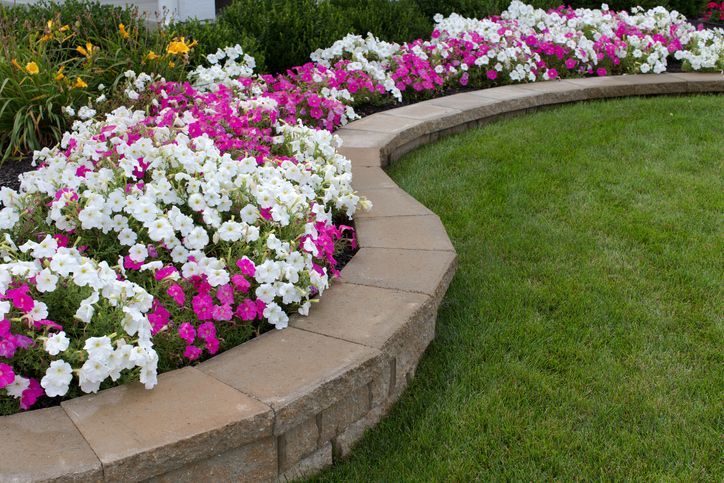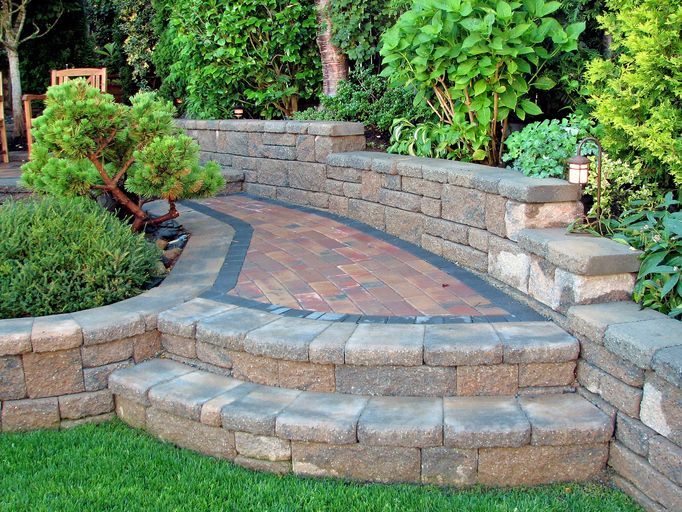Retaining Wall Solutions for Steep Slopes and Challenging Landscapes

For homeowners with steep slopes in their backyards, landscaping can seem impossible. These challenging landscapes often present issues such as erosion, poor drainage, and limited usable space. However, there's a solution that's both practical and aesthetically pleasing—retaining walls.
Retaining walls are more than a necessity; they can transform your sloping yard into a beautiful, usable space. Besides offering support to prevent erosion, they create terraces and flat areas that maximize the utility of your outdoor space. In this guide, we'll explore the essential aspects of retaining wall solutions for steep slopes, from understanding their function to the best design and material choices.
Understanding Retaining Walls
What are Retaining Walls?
At their core, retaining walls are structures designed to hold or retain soil behind them. They are critical in landscapes where slopes and inclines can cause soil movement and erosion. A retaining wall holding back the earth creates a level area that homeowners can use for gardens, patios, or play spaces.
These walls are engineered to withstand the pressure the retained soil exerts, often incorporating drainage solutions to manage water flow. This makes them essential for preventing landslides and soil erosion in sloped areas. Understanding how retaining walls work is crucial for making informed decisions about your landscape design.
Types of Retaining Walls
Several types of retaining walls are suitable for different scenarios and challenges presented by steep slopes. Gravity walls work by relying on their own mass to resist pressure from behind and are often built with heavy materials like stone or concrete. Cantilevered walls use a reinforced slab to transfer pressure to the base, allowing for taller constructions without needing excessive bulk. Anchored walls provide additional support through cables or other stays anchored into the ground behind the wall.
Each type of retaining wall offers distinct advantages depending on the landscape's specific requirements. When selecting a retaining wall design, homeowners should consider factors like the height of the slope, soil type, and drainage needs.
Design Considerations
Critical Factors in Retaining Wall Design
Several critical factors must be considered when designing a retaining wall for a challenging landscape. The wall's height will significantly impact its design, as taller walls require more substantial construction to withstand the increased pressure from the retained soil. Additionally, the slope's angle and soil type are crucial in determining the wall's stability and the need for drainage solutions.
Incorporating proper drainage is essential to prevent water buildup behind the wall, which can weaken the structure over time. Using gravel or installing weep holes can help manage water flow, reducing the risk of damage or collapse. These considerations are vital for creating a safe and effective retaining wall solution.
Balancing Functionality and Aesthetics
While functionality is the primary concern when designing a retaining wall, aesthetics should not be overlooked. Your retaining wall can enhance your landscape's beauty while serving its practical purpose. Consider using materials that complement your home's architecture and the natural surroundings, such as natural stone for a more rustic look or sleek concrete for a modern touch.
Incorporating planting beds into the design can add color and life to the wall, creating a seamless transition between your yard's structural and natural elements. Terracing your slope with multiple walls at different levels can also add visual interest and break up the monotony of a single large wall.
Materials and Construction
Choosing the Right Materials
Selecting the proper materials for your retaining wall is crucial for its durability and appearance. Some popular materials include natural stone, which offers a timeless look and excellent durability, and concrete blocks, known for their versatility and strength. Timber can also be used for a more organic aesthetic, though it may require additional treatment to ensure longevity.
Consider your local climate and environmental conditions when choosing materials. For example, areas with high moisture levels may require materials resistant to water damage, such as concrete or stone. Selecting suitable materials will ensure your retaining wall withstands the test of time and remains an attractive feature in your landscape.
Best Practices for Construction
Constructing a retaining wall requires careful planning and execution to ensure stability and longevity. Begin by excavating the slope to create a level foundation, which is crucial for the wall's structural integrity. Using crushed stone or gravel as a base layer promotes drainage and prevents water accumulation at the wall's foot.
Building the wall in layers or courses can enhance stability, while staggered joints help distribute pressure evenly across the structure. Reinforcing the wall with geogrid or steel bars adds strength, particularly for taller walls or those retaining significant amounts of soil.
Working with a professional contractor, such as McCluskey Contracting, can make a difference. Expert builders ensure the wall is constructed correctly and safely and adheres to local building codes and regulations. Attempting a DIY project without the necessary experience can lead to expensive mistakes and potential hazards, underscoring the value of professional assistance.
Call McCluskey Contracting Today for All Your Retaining Wall Needs
Retaining walls are a brilliant solution to the challenges of steep slopes and difficult landscapes. They provide essential support against erosion, create functional spaces, and can even elevate the aesthetic appeal of your outdoor area.
If you're ready to transform your landscape with a retaining wall, contact McCluskey Contracting for expert guidance and installation. They can help maximize your outdoor space's potential while ensuring safety and durability. Don't wait any longer—your dream landscape is just a wall away!
You might also like
McCluskey Contracting Concrete Blog



